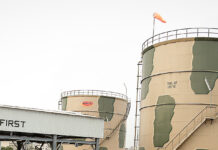LAHORE
by yasir habib
China Pakistan Economic Corridor (CPEC) has finally entered into its second phase of setting up nine Special Economic Zones to materialize the dream of making Pakistan an export-oriented market instead of being a consumer-based economy. The first phase involves energy and infrastructure projects that are heading to completion soon.
The second phase of SEZs will also anchor economy in achieving Foreign Direct Investment (FDI) target of US$ 15 billion by generating 0.1 million jobs by 2025. Provinces, AJK, Gilgit-Biltistan and Fata will have SEZs each. The federal government will host two SEZs. They will be a SEZ in Rashakai (KPK), Dhabeji (Sindh), Bostan (Balochistan), District Shekhupura (Punjab), Port Qasim Karachi and Islamabad (Federal Govt).
SEZs offer a blend of tax-and-tariff benefits, streamlined customs procedures, and meager regulation.
Joint Working Group is all set to hold the second round of talks with its Chinese counterparts in current month to thrash out discussions on the legal framework, labour policies, and liberal trading laws keeping local industry unhurt.
Initial contours of SEZs, seeking inspiration from 2013 incentive policy, Finance Bill 2016 and Gawadar free zone industrial policy, reveal that SEZs amendment act 2016 has been put in place. SEZs investors would avail profuse incentives of importing plant and machinery without customs duty. Chinese and Pakistani investors will be given level playing field to purchase land in SEZs. Mode of mechanism, in major cases, will be centered on a joint venture, a public-private partnership, private or public. It is highly likely that SEZs will set 60-40 employability formula between Chinese and Pakistanis people. Pakistani manpower will have 60 per cent while Chinese workforce will get 40 per cent employments in the zones. However, employability formula may vary case to case.
Already the employment proportion may be seen in two infrastructure projects. The KKH phase II and Sukkar-Multan section engage 70 per cent Pakistani and 30 per cent Chinese workers, CPEC Project Director Hassan Daud Butt said in an exclusive interview with Pakistan Today.
Responding to a query, he said that so far not a single Chinese company has purchased any land in CPEC related initiatives. Only in Gwadar free zone, four companies, two Pakistani and two Chinese, showed interest in an investment there, he said. Rebutting visa free facility to Chinese, he asserted that incentive plan never discusses such concession.
“SEZs policy approach is to develop backward and forward linkages with its local economy. There will be a thrust on connecting businesses in SEZs with local businesses and with technology transfer, and skills development to revolutionize industrialization,” he said.
Pakistan government has never granted any concession to Chinese companies for import of goods for CPEC projects that may take a heavy toll on interests of local manufacturers, CPEC Secretariat says. It mentions that majority of CPEC projects relating to power and management sector are being executed by a big number of Pakistani engineers and workers.
Internationally, the first modern free-trade zone came into being at Shannon Airport, Ireland in 1959. China introduced a zone near Hong Kong in 1980. Approximately 4,300 SEZs are operational in today’s world. Two decades back, there were just 500.
























